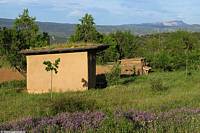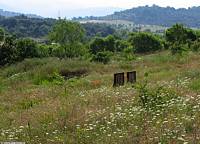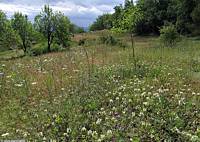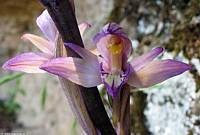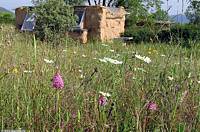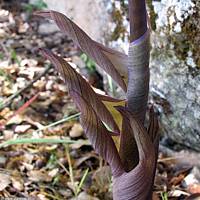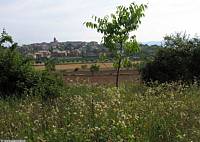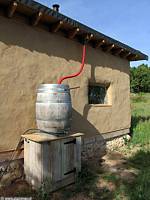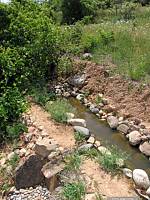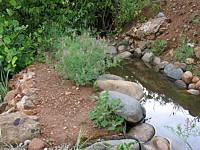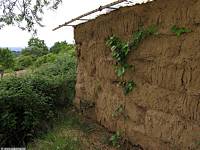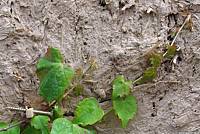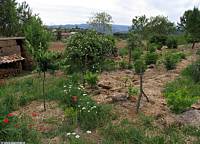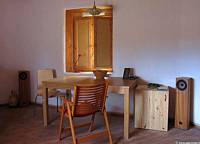|
|
Nature
Switched On
|
|
|
introduction
The wave of white Orlaya grandiflora precedes the coming
wave of Daucus carota.
|
2010 May 30 to June 10
The passing week
The flowering of the different orchids is fairly spread out over the season. The numerous Lady orchids (Orchis purpurea) are now setting fruit while Anacamptis pyramidalis has begun to flower. I counted 32 flowers in a limited, half-shaded area near a Holm oak, which is quite more than past years.
|
The violet patches of Vicia tenuifolia spread out on
many places.
Prunella laciniata abounds on four distinct places. |
|
This year just one specimen of the parasitic Limodorum
abortivum
|
Anacamptis pyramidalis, with the greenhouse on the
background. |
|
|
The intriguing 'skirts' of Limodorum abortivum. 30 May 10:11 |
||
|
The fertile spring, with warm and dry periods alternating with
colder wet spells, has favoured a lush and healthy growth of some
species that in other years suffered from diseases and pests. Thi
|
||
|
Silene vulgaris and a spontaneous young tree of Celtis
australis. 8 Jun 9:47 |
||
|
Water isn´t exactly missing in the different ponds but something
strange is happening to the first, higher pond. In the south-east
corner, where water flows in from the higher terraces, there is an
area where plant |
||
|
The higher pond with the strange
bare area at the back and no Yellow Iris flowers. 10 Jun 9:45 |
||
| The old
wine barrel that collects the rainwater from the roof and sends it
to the ponds. 30 May 9:35
|
||
|
The recently installed pond that drains the shower water is teeming
with animal life.
|
||
| The
draining pond with the outlet to the vegetable garden. 8 Jun 12:27 |
The ugly pond edges with the protruding EPDM liner are here
quickly covered by Fumaria officinalis. |
|
|
The walls of the greenhouse are slowly getting covered with the
climbing plants. To the Hedera helix, Hortensia petiolaris
and Amelopsis veitchii, I recently added the vigorous Clematis
montana (var ‘Rubens’). Hopefully this climber
disposes
of sufficient impetus to cover the greenhouse roof with its leaves
in summer and provide the necessary shade. At the moment the roof is
partially covered with a PE sheet for that matter, letting in
sufficient sun to heat the solar power shower. Up to now and thanks
to the abundant ventilation, temperatures inside get only 2ºC above
the regular shade temperature at midday.
|
||
|
North wall of the greenhouse with Clematis montana
on the left of the Ivy. 2 Jun 10:08 |
Amelopsis veitchii
getting hold on the south wall of the greenhouse. 10 June 10:53
|
|
|
|
||
|
Oak branches were used to make
the poles for the wire fence. A young Quince tree (Cydonia oblonga) on the left. 2 June 9:56 |
||
|
We
painted again the interior walls of the house. This time with the
appropriate slaked lime as the Hydraulic lime (NHL5) we used last
October wasn´t really suitable (in spite of the favourable
information I got from the internet): the finish was more grey than
white and very irregular, showing the individu
|
||
|
The white colour seems to make the walls almost disappear. 10 Jun 9:23 |
||
|
introduction
|
|
